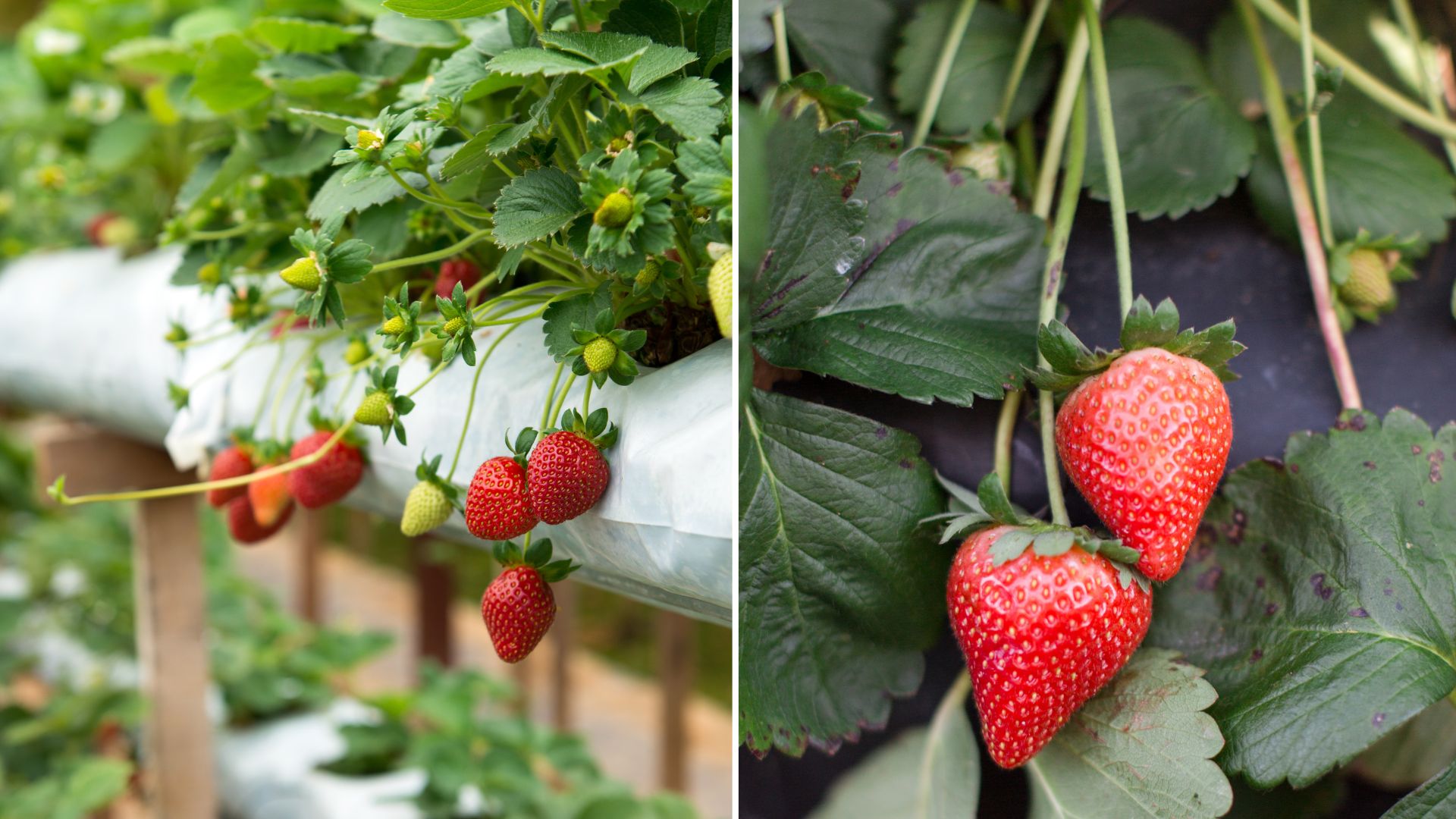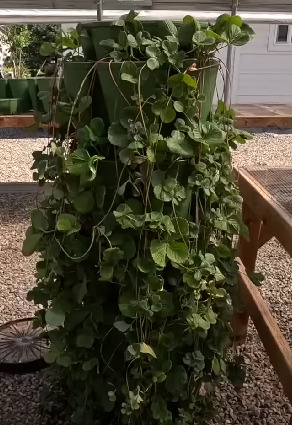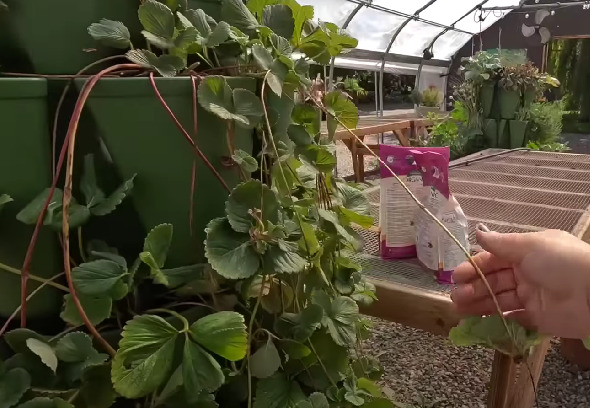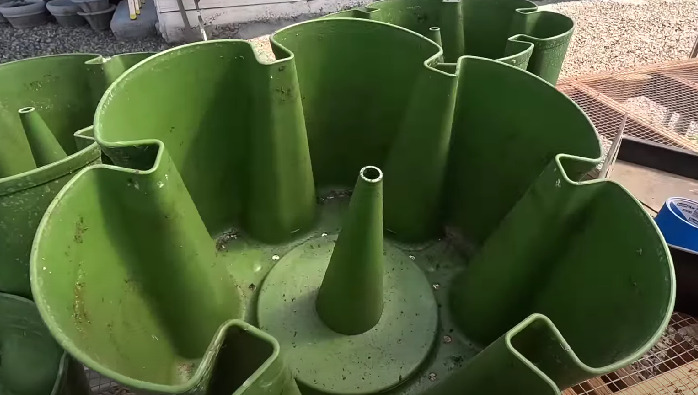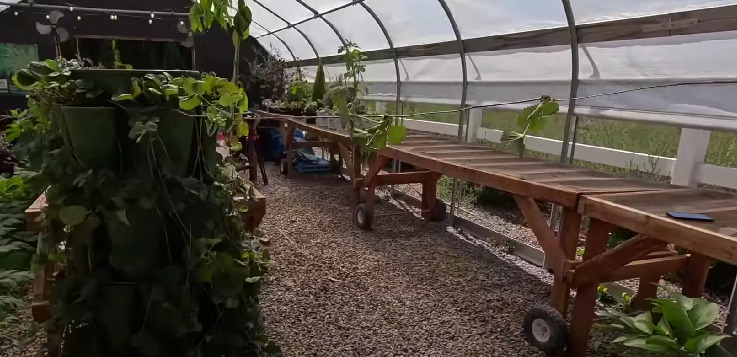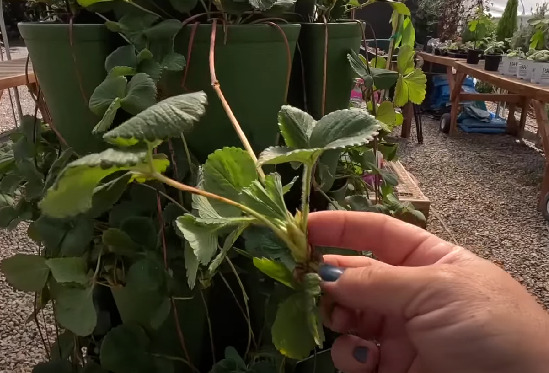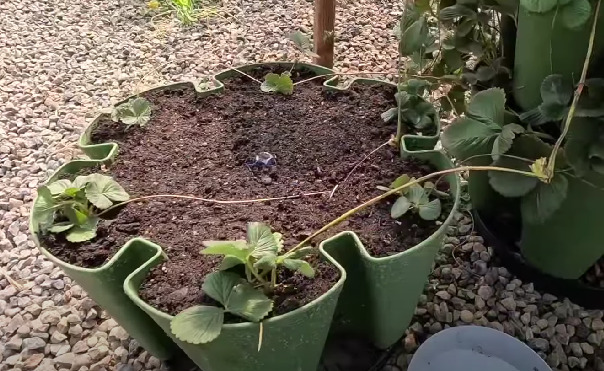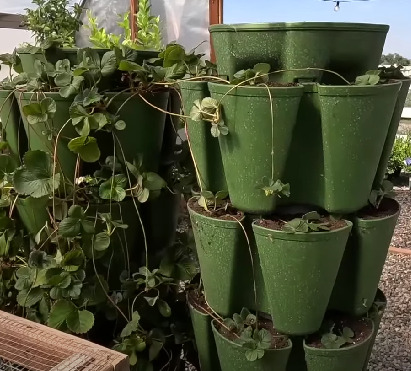Strawberries are one of the easiest fruits that you can propagate. Today, we will be talking about propagating strawberries that have been grown in pots and containers as sort of a vertical garden. Here’s what they currently look like:
As you can see, they are clearly loving their situation – they’ve produced a lot of strawberries and runners this season. And due to their vertical growth, you don’t have to get down on your knees to harvest anything!
The thing about strawberries is that they have two or three good years in them before they start to deteriorate. Most of the time, commercial growers will tell you to take off any runners and blooms the first year you plant them to let them establish (kind of like fruit trees).
However, most gardeners typically don’t do that but just let the strawberries do their thing instead. After they’ve established, they have two to three really productive years and then they start to deteriorate, so you have to replenish your crops.
The good thing is that your strawberries will send out runners, which is one of the ways that they reproduce themselves.
If you are growing them in the ground, you can let some of these runners root in because they will produce roots at a node if they hit moist soil. When the mother plant starts to wane, the new one will already start to root and produce.
The thing is, you don’t want to let all of the plants set, otherwise they will choke themselves out and you’ll get smaller berries.
That’s usually not the case with vertical gardening. So, when it comes to propagating these strawberries, what you’ll need is a new set of pots and a plastic spinner so that it is easy to rotate your plants.
The first thing to consider when growing strawberries in containers is the container itself – that is, what kind of container do you need. Traditional containers are terracotta or glazed ceramic that have little pockets, but these are usually smaller and much heavier.
In vertical gardening, you can grow up to 30 strawberry plants in a very small amount of square footage!
They don’t need deep containers as they are shallow rooted, so depth isn’t something that you have to consider as much as the surface area – you really don’t want to put your strawberry plants too close together. Putting them about a foot apart is perfect; four per square foot is the maximum.
Containers like these work perfectly:
The second thing to think about is the type or variety of strawberries you want to grow. Stay away from June-bearing varieties as they only produce for a very short window.
For instance, you can use the Seascape variety, which is ever-bearing, if you want to enjoy strawberries throughout the season.
The next thing is the consistency of the water. In vertical gardening, you usually water once a day during the summer, even when it’s really hot. You also shouldn’t forget about fertilizing.
Most gardeners use Berry-tone fertilizer for their strawberries, although you can use whichever brand you want as long as it’s suitable for your little berries. These are usually fertilized twice a year when the plants are established.
Now, let’s talk about the runners and how to actually get baby plants. This is how a whole bunch of runners actually looks:
You can see there are several baby plants here, and typically the one closest to the plant is going to be the strongest. These runners take most of the energy from the mother plant; so, if you want your plant to be very productive, you’ll want to clip most of them or even all of them.
If you are growing your plant outside and you want to perpetuate it, let it set a few of these and allow them to root in.
It’s better to keep that baby on the mother plant so that it can keep feeding until it has a chance to root into some soil, and cut it off at that point.
You can even put a little baggie of soil around each one of these to let them form roots. They will develop roots four to six weeks after making contact with the soil and then you can clip it off. However, this is not necessary for your vertical garden to be successful!
Propagation Steps
Start by setting up the first layer on top of the plastic spinner. Fill out the first layer and then move onto the next one. If you are using a container like the one we previously showed, you can pin down six runners.
You can use a landscape staple to tack down your runner so that it can’t go anywhere and the bottom of it will remain in contact with the soil. It should look something like this:
On top goes the watering tray and then the next layer. Repeat the process all the way up!
Don’t rotate them for about 4 to 6 weeks until they have definitely formed their roots. At the end, it should look something like this:
After this is done, go back to the mother plant and remove the other runners that aren’t used for propagating. You can leave some extras in case you need them for propagating again.
If you want, you can use these cut runners and plant them in the soil. However, it’s always best to leave them connected to the mother plant when propagating.
Add some fertilizers and make sure to water your strawberries so that they have enough moisture and nutrients to grow and thrive.
You might also be interested in: Top 8 Secrets For Growing Your Best Strawberries Yet

